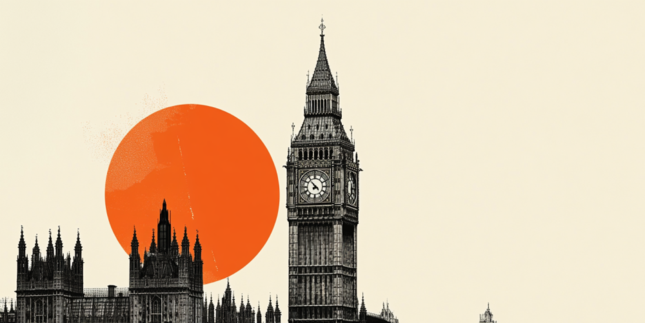THE COMMODITIES MARKET
Technical Overview
Commodities Explained
Commodities are raw materials or basic products used to produce other goods or deliver services. They often take center stage during inflationary periods, serving as a hedge against inflation. Gold, in particular, has an important psychological value as a hedge against economic uncertainty.
But other commodities can also signal shifts in economic cycles. A bottom and rise in copper prices – widely regarded as a barometer of economic health – may signal bearish conditions for bonds and utilities, which are sensitive to interest rate changes.
Energy prices impact the whole economy, besides having a psychological effect on inflation. Rising oil prices, for instance, act as a “tax” on the economy as it tends to slow growth prospects. This often turns into lower interest rates and higher bond prices.
COMMODITIES AND THE US DOLLAR
Commodities, priced in US dollars, tend to have an inverse relationship with the USD. A strong USD often puts downward pressure on commodity prices, making them less attractive to investors.
Commodity groups
Similar to industry sectors in equity markets, the commodity market consists of several groups, each providing different economic signals.
Precious metals: Gold, Silver, Platinum, and Palladium. Copper, despite being used primarily for industrial purposes, is usually also lumped into this category. Precious metals are very popular among Forex traders due to their perceived monetary value.
Energy: Oil is the most prone to supply shocks, political tensions in Oil-producing countries or regions, policies from the Organization of the Petroleum Exporting Countries (OPEC), and volatile demand from emerging countries. These factors create significant risks for those trading in this market. Higher Oil prices tend to negatively impact equities, raising the prospects of higher inflation and slower growth.
Grains: Grain prices fluctuate on the so-called crop year, with planting and harvesting forming tradable price cycles. However, those cycles are influenced by unpredictable weather conditions. Key agricultural commodities include Corn, Soybeans, Wheat and Oats.
Soft commodities: This category includes coffee, orange juice, cocoa, sugar and cotton.
Some commodities, specifically the metals group, are considered tangible assets because they are non-perishable. Meanwhile, Silver and Gold have the advantage of consistent specifications across nations, unlike Texas and Brent crude Oil, which differ in composition.
GOLD SPOT - DAILY CHART
US DOLLAR INDEX - DAILY CHART
PALLADIUM - CHART
WTI OIL- DAILY CHART
Commodity Currencies
Commodity currencies are said to be correlated with the price of commodities. The Australian dollar, the Canadian dollar and the New Zealand dollar are considered commodity currencies because the economies backed by the named currencies are sensitive to commodity valuations. In this light, be sure to factor in the global economic outlook when evaluating any of the commodity currencies. In any case, correlation is not causation and such relationships can and do break down.
AUD/USD SPOT - 60 MIN
AUD
Being China a tremendous consumer of raw materials, and Australia a leading exporter of metals, coal and grains, market perceptions of strong demand from China could see the Australian dollar gain in sympathy with commodity prices. The boom in Asian regional growth over the past decade has supported the Australian economy, bringing with it higher levels of inflation. This explains why the RBA maintained higher interest rates than other major central banks.
Visit a dedicated AUD/USD page.
CAD/USD SPOT (RECIPROCAL)- 60 MIN
CAD
Canada is the fifth largest gold producer and fourteenth largest oil producer. Thereby, strong commodity prices generally benefit domestic producers and increase their income from exports. There is a caveat, though, and that is the positive correlation makes the Canadian dollar more expensive in USD terms. Since Canada's economy is very dependent on external demand from the United States, a strong CAD could filter into reduced demand for Canadian Exports.
Visit a dedicated USD/CAD page.
NZD/USD SPOT - 60 MIN
NZD
New Zealand is primarily an agricultural-commodity-producing economy (dairy products and meat in particular), and therefore it displays a weaker correlation than CAD and AUD to metal and energy prices. But still, it is highly sensitive to global performance, especially of its key trading partners, Australia, United States and Japan. It's commodity currency status is also to be understood via its dependency on the Australian economy, and since Australia is very commodity driven, any changes affecting the Australian economy affect New Zealand as well. Against the Japanese yen, the NZD can bee regarded as a risk barometer.
HOW BULLISH ARE COMMODITY CURRENCIES AND THE USD AGAINST A BASQUET OF 21 WORLD CURRENCIES?
The Bullish Percentage Index compares the four majors against the 21 most traded currencies (according to the BIS statistics). Among these currencies are the Korean Won, the Mexican Peso, the Turkish Lira, the Brazilian Real, etc. It shows the percentage of currency crosses on buy signals on Point and Figure charts. Point and Figure charts have the particularity of being objectively bullish or bearish, depending on the most recent double-top/bottom buy or sell signal. The Bullish Percentage Index is a breadth indicator used in stock indices, and its logic has been adopted by FXStreet.com to measure currency strength.
The index can be read as an oscillator, with readings between 0% and 100%. It is updated on a daily basis, on GMT close, and compared to the same data 5 days ago.
Latest Commodities Analysis
Editors' picks

زوج يورو/دولار EUR/USD ينخفض إلى مستويات جديدة منخفضة، ويستهدف 1.1600
تكتسب ضغوط البيع على زوج يورو/دولار EUR/USD الآن مزيدًا من الزخم، مما يدفع الزوج إلى تسجيل أدنى مستويات جديدة متعددة الأسابيع في نطاق 1.1625-1.1620 يوم الجمعة. يأتي استمرار الميل الهبوطي استجابةً لمزيد من المكاسب في الدولار الأمريكي، حيث يواصل المشاركون في السوق تقييم الإصدار المختلط للوظائف غير الزراعية في الولايات المتحدة لشهر ديسمبر.

زوج استرليني/دولار GBP/USD ينكسر دون 1.3400، ويتحدى المتوسط المتحرك البسيط لمدة 200 يوم
انخفض زوج استرليني/دولار GBP/USD تحت ضغط شديد وتراجع لليوم الرابع على التوالي يوم الجمعة. في الواقع، يعاني الجنيه الإسترليني من الأداء القوي للدولار الأمريكي، الذي تعزز بعد تقرير الوظائف غير الزراعية المختلط، ويتداول على مسافة قريبة من متوسطه المتحرك لمدة 200 يوم بالقرب من 1.3380.

الين الياباني يضعف أكثر؛ زوج الدولار الأمريكي/الين الياباني USD/JPY يصل إلى أعلى مستوى له منذ عدة أسابيع مع قوة الدولار الأمريكي قبل تقرير الوظائف غير الزراعية الأمريكي
يضيف الين الياباني إلى خسائره خلال اليوم خلال النصف الأول من الجلسة الأوروبية وسط حالة من عدم اليقين بشأن توقيت خفض سعر الفائدة التالي من قبل بنك اليابان وتصاعد الخلاف بين الصين واليابان. هذا، إلى جانب المخاوف من أن زخم الاستهلاك قد يتلاشى إذا استمر التضخم في تجاوز نمو الأجور في أوائل عام 2026، يطغى على الارتفاع غير المتوقع في بيانات إنفاق الأسر اليابانية لشهر نوفمبر.

الذهب يغازل القمم السنوية حول 4500 دولار
يحتفظ الذهب بتحيزه الإيجابي يوم الجمعة، مضيفًا إلى مكاسب يوم الخميس ومتحديًا أعلى المستويات السنوية في منطقة 4500 دولار للأونصة. تفضل المعنويات السلبية المعدن الأصفر على الرغم من النبرة الثابتة في الدولار الأمريكي وارتفاع عوائد سندات الخزانة الأمريكية.

توقعات أسعار خام غرب تكساس الوسيط: زخم الاتجاه قصير الأجل يتحسن فوق المتوسط المتحرك البسيط لمدة 21 يومًا
انخفض خام غرب تكساس الوسيط يوم الجمعة بعد ارتفاعه بنحو 4% في اليوم السابق حيث تعيد الأسواق تقييم إشراف الولايات المتحدة على النفط الفنزويلي. يشير الرئيس الأمريكي دونالد ترامب إلى استثمار محتمل بقيمة 100 مليار دولار في قطاع النفط الفنزويلي، مما ينعش المخاوف من فائض العرض. من الناحية الفنية، يتحسن الزخم على المدى القريب، لكن الاتجاه على المدى الطويل لا يزال هشًا.